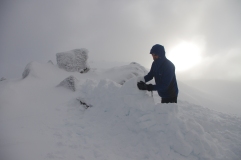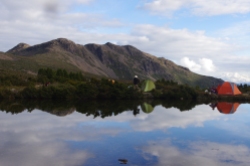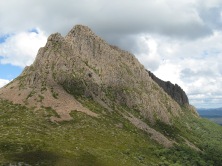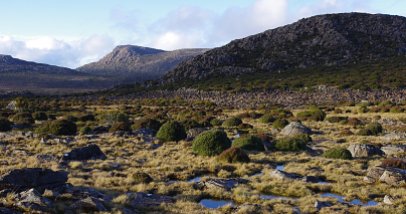Australia has enormous problems with large invasive species like feral pigs, horses and deer. These species have negatively impacted huge sections of the continent. Yet self interest sometimes over rides the need to remove these populations. For instance, hunters sometimes argue that animals like deer should be left in wild places like national parks to allow continued hunting. And there is a huge campaign to see feral horse populations retained in the Australian Alps on spurious ‘cultural’ grounds.
Public debate has focused strongly on wild horse populations over the past few years. The threat poised by deer in lutruwita/ Tasmania is set to become a major public issue as the size of the feral deer population becomes clear. It is obvious that deer are moving into new habitats, and will bring enormous ecological impacts as they do so.
Deer were introduced into Australia in the 19th century for hunting. There are now six species roaming wild, and their numbers are increasing dramatically as their population expands and through human action.
Fallow deer (Dama dama) were introduced to Tasmania for hunting by colonists in the 1830s. Now there is growing concern amongst land holders and conservationists that this species is on the move (source).
As reported in The Examiner, the Tasmanian government released results of an aerial survey of the state’s fallow deer population last week, which estimated a population of 54,000 animals – an outcome described as “within expectations” and constituting a ‘sustainable population’. The survey found wild fallow deer numbers had increased 5.4% between 2006 to 2019.
Environmental groups expressed alarm. The Bob Brown Foundation feared the deer population was “rapidly spreading west and south” through the Wilderness World Heritage Area and urged the government to adopt controlling policies now. The Invasive Species Council noted that the problem was far worse than the government admitted, because the ‘survey didn’t even cover the World Heritage Area, northwest or southern areas of the state’. The government admits that the survey only covers Tasmania’s central and north-east regions.
According to media reports on Radio National, deer are now moving into the western end of the Central Plateau, as far as the Walls of Jerusalem. One researcher says ‘it is only a matter of time before they are seen on the Overland Track’.
When giving evidence under oath to the 2017 Legislative Council inquiry, DPIPWE officials estimated the feral deer population as likely closer to 100,000.
The Greens say: In declaring the feral deer population as ‘sustainable’, the government is allowing them to breed in huge numbers, damage fencing, crops and wilderness areas unchecked.
‘This destruction is official government policy’.
‘Fallow deer are not ‘wild deer’. They are feral animals, a pest species to farmers and in the natural environment that should be treated as such. ‘
The Invasive Species Council say ‘Tasmania and Victoria remain the last two states in Australia that continue to treat deer as a hunting resource instead of managing them as the pest species they have become’.
‘Feral deer destroy native vegetation, trample plants and ring-bark young trees. They foul waterholes, cause soil erosion, spread weeds and increase the potential for transmitting diseases such as foot-and-mouth disease’.
Shooters support the Tasmanian Greens’ view that fallow deer should be removed from sensitive environmental areas, however they objected to the party’s views that wild deer should be eradicated completely and reclassified as a feral animal.
Take action
The Invasive Species Council has issued an alert, urging supporters to contact the government to show their support for rapid action to reduce deer numbers.
They say ‘we need to act fast to protect Tasmania’s incredible Wilderness World Heritage Area and other precious areas in the Apple Isle from invading feral deer!’
Please send the Tasmanian Premier an urgent email now: bit.ly/wilderness-action
HEADER IMAGE:
Distribution of fallow deer in Tasmania – 2011 (Source: DPIPWE 2011)
























































October 8, 2020 at 11:02 am
I’m not sure reclassifying as a feral animal really makes any difference. They wouldn’t be eradicated, the best we can hope for is a cull to control numbers (which means there would still exist for recreational hunting). It would also increase the social license for recreational hunters to operate!